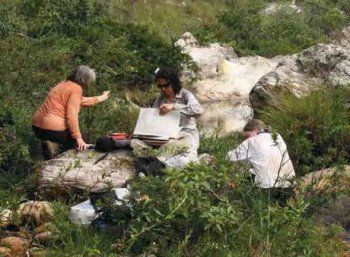
The first annual State of the World’s Plants report, which involved more than eighty scientists and took a year to produce, is a baseline assessment of current knowledge on the diversity of plants on earth, the global threats these plants currently face, as well as the policies in place and their effectiveness in dealing with threats.
“This is the first ever global assessment on the state of the world’s plants. We already have a ‘State of the World’s …birds, sea-turtles, forests, cities, mothers, fathers, children even antibiotics’ but not plants. I find this remarkable given the importance of plants to all of our lives – from food, medicines, clothing, building materials and biofuels, to climate regulation. This report therefore provides the first step in filling this critical knowledge gap,” said Professor Kathy Willis, Director of Science at the Royal Botanic Gardens, Kew at the report launch on Monday.
“But to have effect, the findings must serve to galvanise the international scientific, conservation, business and governmental communities to work together to fill the knowledge gaps we’ve highlighted and expand international collaboration, partnerships and frameworks for plant conservation and use,” she added.
The status of plants outlined in the report is based on the most up to date knowledge from around the world as of 2016 and is divided into three sections; describing the world’s plants, global threats to plants and policies and international trade.
Naming and counting
The first section focuses on the diversity of plants on earth, noting that there are now an estimated 391,000 vascular plants known to science of which 369,000 are flowering plants – with around 2,000 new vascular plant species described annually. Some of the most exciting were found during fieldwork while many others were detected only after they have already been preserved and filed as herbarium specimens and a few have been discovered in the glasshouses at Kew. One of the largest carnivorous plants known (1.5m in height), a new insect-eating plant of the sundew genus called Drosera magnifica was even first discovered on Facebook. Eighteen new species of the genus Ipomoea in the morning glory family, were described from Bolivia last year, among them a close relative of the sweet potato, Ipomoea batatas, offering exciting options for the future of this crop.
“But there are still large parts of the world where very little is known about plants. Identification of these important plant areas is now critical,” said Steve Bachman, strategic output leader for the State of the World's Plants report, RBG Kew. “Similarly, we still only know a fraction of the genetic diversity of plants and whole-genome sequences are currently available for just 139 species of vascular plants. Activity in this area needs to speed up.”
For more information, visit: www.stateoftheworldsplants.com



 Classifieds
Classifieds

